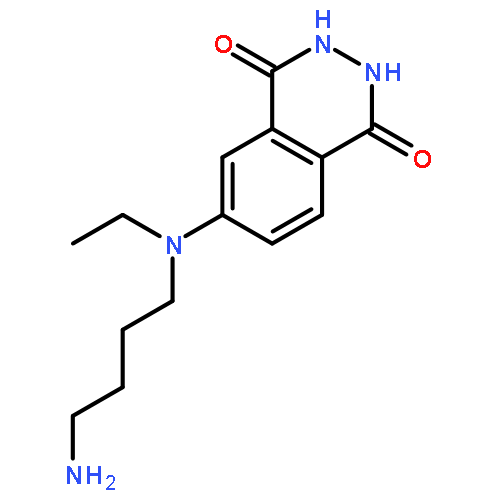Co-reporter: Mengxiao Liu, Hongli Zhang, Jiangnan Shu, Xiaoyang Liu, Fang Li, and Hua Cui
pp: 2857
Publication Date(Web):March 4, 2014
DOI: 10.1021/ac5002433
Despite much progress in functionalized gold nanomaterial (GNMs), chemiluminescent (CL) functionalized GNMs with high CL efficiency are far from fully developed. In this work, we report a general strategy for the synthesis of gold nanoparticles (GNPs) bifunctionalized by CL reagent and catalyst metal complexes (BF-GNPs) by taking N-(aminobutyl)-N-(ethylisoluminol) (ABEI) as a model of CL reagents. The complexes of 2-[bis[2-[carboxymethyl-[2-oxo-2-(2-sulfanylethylamino)ethyl]amino]ethyl]amino]acetic acid (DTDTPA) with various metal ions, including Co2+, Cu2+, Pb2+, Ni2+, Hg2+, Cr3+, Eu3+, La3+, Gd3+, Sm3+, Er3+, Dy3+, Ce4+, and Ce3+, were grafted on the surface of ABEI functionalized GNPs (ABEI-GNPs) to form a series of BF-GNPs. These BF-GNPs exhibited excellent CL activity. In particular, the CL intensity of DTDTPA/Co2+-ABEI-GNPs was over 3 orders of magnitude higher than ABEI-GNPs. This work demonstrates for the first time that metal complexes grafted on the surface of GNPs have unique catalytic activity on the CL reaction, superior to that in the liquid phase. Such BF-GNPs may find future applications in bioassays, microchips, and molecular/cellular imaging.
Co-reporter: Guixin Li, Xiuxia Yu, Danqing Liu, Xiaoying Liu, Fang Li, and Hua Cui
pp: 10976
Publication Date(Web):October 14, 2015
DOI: 10.1021/acs.analchem.5b02913
The electrochemiluminescence (ECL) behavior of N-(aminobutyl)-N-(ethylisoluminol)/hemin dual-functionalized graphene hybrids (A-H-GNs) and luminol-functionalized silver/graphene oxide composite (luminol-AgNPs-GO) was investigated under cyclic voltammetry and pulse potential. It was found that A-H-GNs and luminol-AgNPs-GO exhibited excellent ECL activity. On this basis, a label-free ECL aptasensor for 2,4,6-trinitrotoluene (TNT) detection was developed based on bilayer structure of luminescence functionalized graphene hybrids consisting of A-H-GNs and luminol-AgNPs-GO. First, positively charged chitosan-coated A-H-GNs were modified on the surface of indium-doped tin oxide electrode by simple dripping and drying in the air; after that, the modified electrode was immersed in negatively charged luminol-AgNPs-GO modified with aptamer (apta-biotin-SA-luminol-AgNPs-GO) to form apta-biotin-SA-luminol-AgNPs-GO/CS-A-H-GNs/ITO electrode (i.e., aptasensor) by electrostatic interaction. In the presence of TNT, a remarkable decrease in ECL signals was observed due to the formation of aptamer–TNT complex. TNT could be detected based on the inhibition effect. The aptasensor exhibits a wide dynamic range from 1.0 × 10–12 to 1.0 × 10–9 g/mL, with a low detection limit of 6.3 × 10–13 g/mL for the determination of TNT, which is superior to most previously reported bioassays for TNT. Moreover, the proposed aptasensor has been successfully applied to the detection of TNT in environmental water. It is sensitive, selective, and simple, avoiding complicated labeling and purification procedures. Due to the wide target recognition range of aptamer, this strategy provides a promising way to develop new aptasensor for other analytes.
